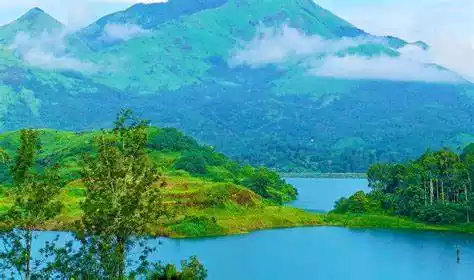A Comprehensive Overview of Wayanad District
Introduction
Wayanad, a district nestled in the heart of Kerala, India, is a realm where nature and culture coexist in harmonious splendor. Known for its lush green landscapes, mist-clad mountains, and rich cultural heritage, Wayanad is a jewel in Kerala’s crown. This article delves into the intricate details of Wayanad’s demography, culture, geography, cuisines, history, notable personalities, and administration, providing a holistic view of this enchanting district.
Demography
Wayanad is a melting pot of ethnic diversity, with a population comprising various communities, including tribal groups such as Paniyas, Adiyas, Kurichiyas, and Kattunaikkans. According to the 2011 Census, the district has a population of over 816,558, with a balanced gender ratio and a literacy rate of approximately 89%. The majority of the population practices Hinduism, followed by Christianity and Islam, which significantly influences the region's cultural and social dynamics.
Culture
The cultural fabric of Wayanad is woven with threads of tribal traditions, folklore, and classical art forms. Traditional dance forms like Theyyam, Kalampattu, and folk music like Vattakali reflect the district's rich cultural heritage. Festivals such as Vishu, Onam, and Mahashivaratri are celebrated with great fervor, showcasing vibrant customs and rituals. The tribal communities, with their unique customs and practices, add a distinctive charm to Wayanad’s cultural landscape.
Geography
Wayanad is situated on the southern tip of the Deccan Plateau and is part of the Western Ghats, a UNESCO World Heritage site. The district spans an area of approximately 2,132 square kilometers, characterized by hilly terrain, dense forests, and sprawling plantations. The altitude ranges from 700 to 2,100 meters above sea level, with Chembra Peak being the highest point. Wayanad’s geography is enriched by several rivers, including the Kabini, which contribute to the region’s lush greenery and fertile soil.
Topography
Wayanad’s topography is marked by its undulating hills, valleys, and plateaus. The region is interspersed with scenic waterfalls, caves, and wildlife sanctuaries. Notable natural attractions include the Edakkal Caves, Meenmutty Falls, and the Wayanad Wildlife Sanctuary, which is a haven for biodiversity. The district’s landscape supports a wide variety of flora and fauna, making it a popular destination for nature enthusiasts and adventure seekers.
Cuisines
Wayanad’s culinary scene is a delightful blend of traditional Kerala cuisine and tribal flavors. The staple diet includes rice, tapioca, and a variety of vegetables. Popular dishes include Puttu and Kadala curry, Appam with stew, and fish curry. The use of locally sourced spices like pepper, cardamom, and cloves adds a unique aroma and taste to the food. Tribal delicacies such as bamboo rice payasam and wild honey enhance the district’s gastronomic diversity.
History
The history of Wayanad is a tapestry of ancient civilizations, colonial conquests, and tribal legacies. Archaeological evidence from the Edakkal Caves suggests human habitation dating back to the Neolithic age. The region was ruled by various dynasties, including the Pazhassi Rajas and the Vijayanagara Empire. During the British colonial period, Wayanad was known for its resistance movements led by Kerala Varma Pazhassi Raja. The district’s historical landmarks and monuments stand as testaments to its rich and turbulent past.
Poets and Authors
Wayanad has been a nurturing ground for literary talents who have contributed significantly to Malayalam literature. Notable poets and authors from the region include Akkitham Achuthan Namboothiri, whose works reflect profound philosophical and spiritual insights. The district's literary culture is also enriched by folk tales, tribal stories, and local lore, which have been preserved and passed down through generations.
Administration
Wayanad district is administratively divided into three taluks: Mananthavady, Sulthan Bathery, and Vythiri. The district is governed by a District Collector who oversees the implementation of government policies and development programs. Local self-governance is facilitated through Panchayati Raj institutions, ensuring grassroots participation in decision-making processes. The administrative machinery focuses on sustainable development, conservation of natural resources, and improving the quality of life for its residents.
Diagram: Wayanad District Overview
Conclusion
Wayanad, with its harmonious blend of natural beauty, cultural richness, and historical significance, stands as a testament to Kerala’s diverse heritage. From its vibrant tribal communities and traditional art forms to its picturesque landscapes and delectable cuisines, Wayanad offers a unique and immersive experience. As the district continues to evolve and develop, it remains rooted in its traditions, providing a glimpse into the soul of Kerala. Whether you are a nature lover, a history buff, or a culinary enthusiast, Wayanad promises a journey of discovery and enchantment.
